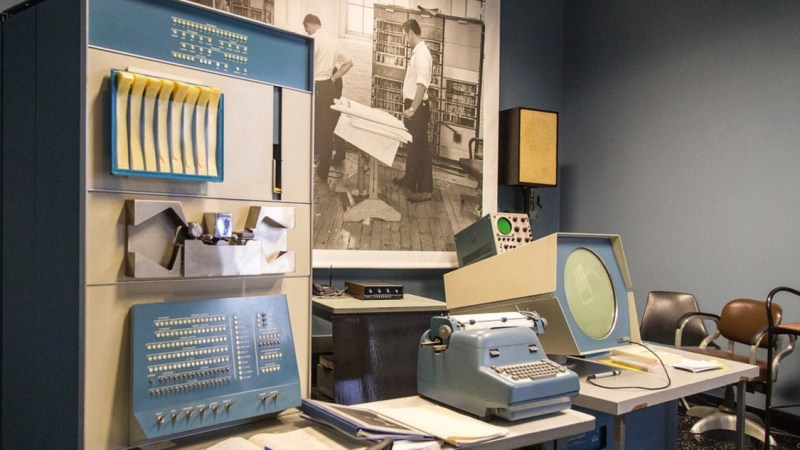Over on Hackaday.io our hackers [Angelo] and [Oscarv] are making a replica of the PDP-1. That is interesting in and of itself but the particularly remarkable feature of this project is its novel use of printed circuit boards for casing and instrument panels.
What does that mean in practice? It means creating a KiCad file with a PCB for each side of the case/panel. These pieces can then be ordered from a board house and assembled. In the video below the break you will see an example of putting such a case together. They use sticky tape for scaffolding and then finish things off by soldering the solder joints on each edge together.
We cover so many PCB hacks over here at Hackaday that we have an entire category dedicated to them: PCB Hacks. If you’re interested in PCBs you might like to read about their history, as before they were everywhere they were nowhere.
Thanks to [Oscarv] for writing in to let us know about this one.
















Quite a few years ago I found the PDF below. It’s a tutorial for this, only they use “raw” plated FR4, which is of course still a lot cheaper then buying PCB’s. It has some very nice details such as compensating for solder shrinkage to keep corners square.
https://qrpguys.com/wp-content/uploads/2016/11/pcb_chassis_a.pdf
Ken – wa4mnt
http://www.qrpbuilder.com
Awesome. Thanks for the link!
Funny I learned this trick years ago from a hack a day article. Surprised it doesn’t turn up more often as many goofball “pcb as art” badge projects gets posted here.
One trick I did a while ago (which wouldn’t really fit this project) was back lit indicators by removing the copper layers and solder mask using the text I wanted.
Any chance of finding the particular link? I went digging and found a few interesting projects, including this one from back in 2015: https://hackaday.com/2015/06/03/how-to-build-beautiful-enclosures-from-fr4-aka-pcbs/
I kind of glanced around for it but we’re talking 10+ years ago
Besides ham radio guys were making enclosures out of pcb material for eons it was just the front panel idea
I’ve thought about this a few times, but I assumed that every board house (JLCPCB is my preferred one) would be dinging you for each individual “sub-design” as if it were its own PCB. Is that not the case?
I’m making panels from aluminum PCB’s. Since I’m familiar with kicad for designing them and JLC produces them very cheap.
Routing and dril holes are perfect and so is the white coated surface finish. The black silkscreen printing is s little low resolution but nothing that bothered me.
I love Oscar’s work. He doesn’t just create a work-alike classic computer, but goes the extra 1,000 kilometers and makes a scaled down version of the case and front panel that work like the original. So cool. He’s been at the Vintage Computer Festival Eastm several times, always good to see him and chat.
Thanks for article. Have the 8, 11/70, and 10. Waiting on getting e-mail to purchase the 1 (and the enigma machine). Fun projects and a blast from the past.
Years ago, I played Spacwar! on THE PDP-1 – the one at MIT
Later on Data General Nova computers at Smithsonian Astrophysical Observatory, when the room was too hot to run the hard drives. (Pigeon feathers in the air conditioners). A quite interesting summer job, back when computer graphics hardware was expensive.
my school uses this technique to create the panel of the lab PSU we assemble as a project